Signages include any graphics, symbols, signs, and visuals that are meant to communicate a specific message to a targeted audience. Since the coming of the internet, the popularity and potency of signages have gone up since it is possible to reach consumers and people everywhere. Hence, digital and print signages are actively used worldwide in all kinds of industries.
This is evidenced in the numbers. The signage market is expected to reach $49.8 billion by 2020. This is in part due to the signage suppliers who are increasingly seeking new regions and territories to expand into. Industries like FBT, FMCG, and retail are key contributors and drivers of industry growth.
Signage market latest trends
The latest trends in the signage market are heavily influenced by increased digitalization and development in countries in the regions of the Asia Pacific and South America. Demand for both digital and physical signage is expected to rise due to the expansion of the retail market in developing nations. As modern retail expands in tier-2 and tier-3 cities of Asia and LATAM, signage suppliers will look to benefit from this growth and develop a home base there.
The popularity of e-commerce and signages
E-commerce platforms will contribute heavily to the demand for signages. The trend of online shopping has caught fire and is here to stay. As such, online marketers and retailers also realize the importance of attractive visuals, graphics, and images that attract customers. On the internet, digital signage and offline, print signage will supply and fulfil this demand.
The dominance of commercial vertical in digital signage
This commercial vertical includes healthcare, hospitality, corporate, retail, and government, malls, quick-service restaurants. Digital signage holds the potential to attract large groups of customers and convey information in an appealing manner. Hence, there is a large demand for it in this vertical and also significant customer satisfaction due to its right and effective usage.
Increased adoption of technology
Retailers and suppliers have realized that technology is here to stay and so is the medium of online purchase for various items and services. Hence, they are increasingly adopting more sophisticated and advanced technology that is also in line with their budget. They realize that attractive signage is important for getting the customer to walk in the store and then to create a cohesive experience for them. It drives better walk-ins and conversion.
Hence, retailers are looking to invest in technology that will lead to better visual branding and appearance to create a better experience, both online and in-store.
Catching up with North America
Owing to its progressive and advanced technology, North America has the largest and the leading share in the digital signage market. Moreover, the consumer base has a high standard of living and demands accurate information in a fast and easily digestible manner. Digital signage is able to fulfill these demands and the tech geniuses apply their flair for innovation here as well.
Other regions, though, technologically strong aren’t yet as progressive as North America. Hence, they’ll be trying to emulate it in terms of innovation to move their signage market forward.
Signage market insights
In the present, the signage market is doing well and branching out into new avenues. The power of advertising, visual, and graphics is recognized both online and offline now. Hence, markets have sprung up anywhere and everywhere.
- Currently, print signage is facing tough competition from digital signage. The ease of producing digital signage coupled with its ubiquity and increased receptivity is contributing to its popularity. The only reason print signage is still going on is due to its relative cheapness and longer life span. New inkjet printing technology is also contributing to its longevity.
- Current key players in the signage industry include Panasonic, Intuiface, Sharp, E Ink Holdings, Samsung Electronics, BARCO, Goodview Electronics, Daktronics, Song, BenQ, Scala, AU Optronics, among others.
- The U.S. and Europe have been top markets for signage in recent years. India and China are expected to take up the mantle now due to an increase in visual/ graphic talent, reduced cost of panels, and expansion of the advertising industry.
- The high market maturity regions are the U.S., China, France, Russia, Germany, Italy, and the U.K. Medium market maturity regions include Peru, parts of Eastern Europe, and major parts of Asia and LATAM.
- In Australia alone, the digital signage market is expected to cross $130 million by 2020. This is due to retail expansion which has also bred new market end-user segments like public transport and financial services.
- Currently, the signage industry has footprints in every industry: retail, hospitality, transport, stadiums, healthcare, corporate, education, entertainment, banking. Whether through the digital or print medium, it will continue to maintain its stronghold in these industries.
As per the latest evolving trends and insights, the global signage market is progressing on an upward trajectory. Each industry will have an increased need for it, contributing to its popularity and longevity.





